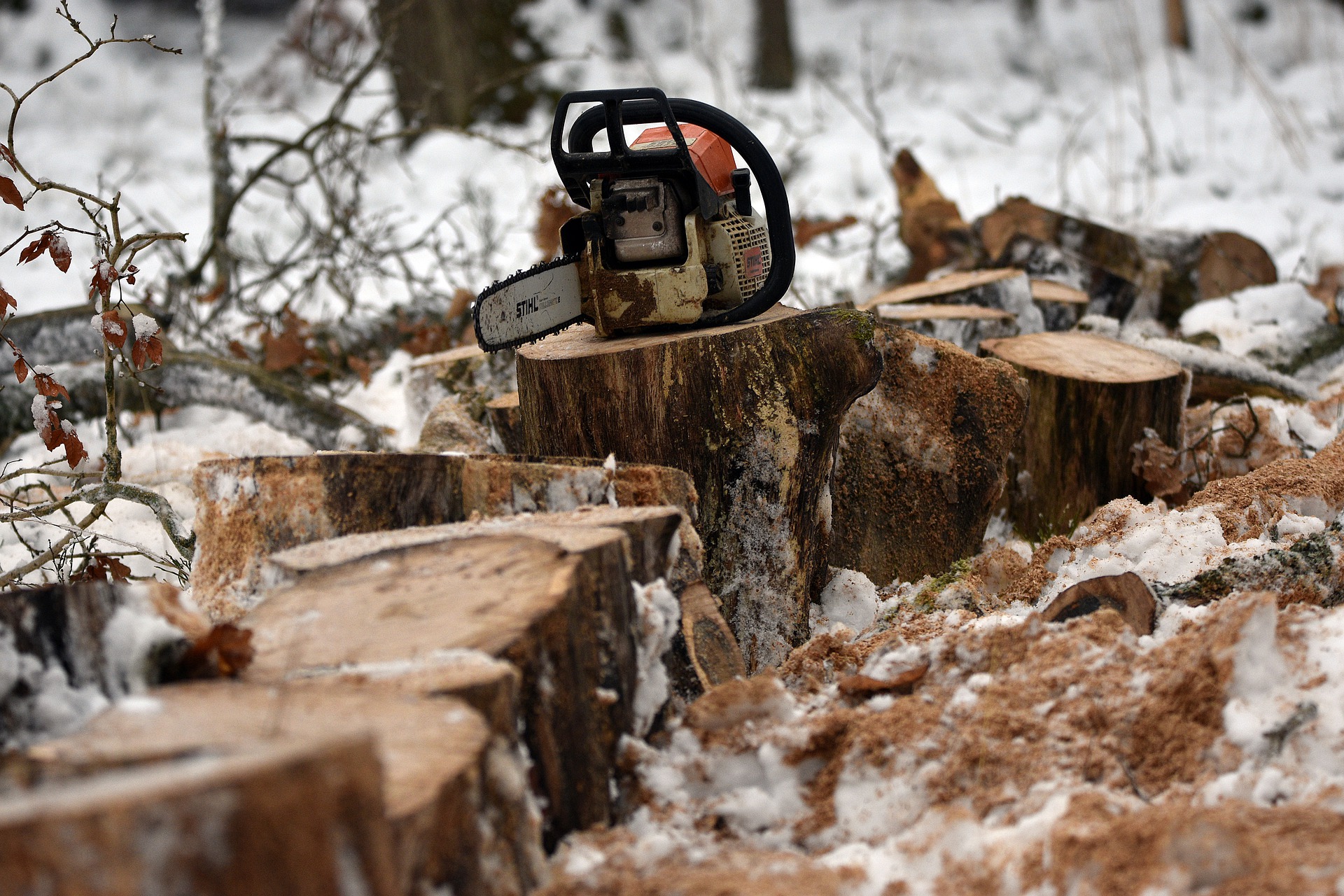Stump Grinding VS Stump Removal
Popular tree services include stump removal and grinding. However, deciding whether to have stump removal or stump grinding can be difficult. Knowing the distinction between tree stump removal and grinding, as well as the cost, process, and pros and cons, can assist you in selecting the best service.
If you’re reading this, you’re probably wondering whether stump grinding and stump removal mean the same thing. Read on to find the answer.
Stump removal
The entire stump, including its roots, is removed from the ground during the stump removal process. It can be difficult to remove a tree’s roots. This process necessitates the use of heavy-duty machineries, such as a Bobcat, which has a high power requirement. Furthermore, because tree roots spread widely, you may end up disturbing a significant portion of your property, resulting in a massive hole.
A gaping hole in the middle of your lawn is unappealing. It can detract from the appearance of your well-kept lawn and even lower the value of your home. Stump removal is a good option for property owners who need to make room for new construction.
Pros
- Total elimination of the stump and roots
- Allows for replanting
- No health hazards
Cons
- Labor and time-intensive
- Gaping hole after removal
- More difficult to remove
- Not environmentally friendly
Stump grinding
Stump grinding, on the other hand, is a much more manageable option for property owners who want the stump removed without damaging the landscaping. Stump grinding is the process of excavating a tree stump with a stump grinder without removing the roots. Tree stump grinders are large, powerful machines that must be handled by a professional. Stump grinding is typically faster than other methods, such as manually removing a stump.
The stump grinding process entails shaving or grinding the remaining stump into fine sawdust with a stump grinder. The stump can be as shallow as 1 inch below ground or as deep as 16 inches underground. The wood chip residue fills the resulting hole, eliminating the need for additional fillings.
The answer to the question of how deep tree stumps go is that it depends on the tree. White oak trunks, for example, are deeper than sycamore trunks, while sycamore trunks are deeper than cottonwood tree trunks. The industry standard, however, is to grind the stump until no trunk remains.
If you want to know how deep your tree trunk goes, you can ask GM 2 Tree Service‘s team to estimate the depth when they come to grind it.

Do the roots left behind after stump grinding resprout?
No. After a tree stump is removed, the roots do not regrow. Instead, the root system gradually decomposes over time until nothing remains. You also won’t have to worry about the roots leaving a gaping sinkhole because the decomposition process is very gradual. Furthermore, the roots decompose into the soil, so no vacuum is left.
Pros
- Fast to remove
- environmentally friendly
- not labor intensive
- You can use the leftover sawdust for mulching
- No gaping hole after grinding
Cons
- The root decay process may take too long
- The roots left behind can make it harder for you to plant other plants
Stump Grinding vs. Stump Removal Costs
There are many factors to consider when determining the cost of stump removal vs. stump grinding. These factors include:
- The diameter of the stump
- The root system of the stump
- Soil type
- Number of stumps needing removal
Some tree removal companies stipulate a minimum service charge per stump and may even offer a discount.
Stump removal usually costs between $370 and $675 per stump. Large tree stumps that take a long time to remove may cost significantly more. You may be charged an additional $25 to dispose of the stump and roots. Stump grinding, on the other hand, ranges from $75 to $400. The cost can rise to $600 if the tree grinding takes longer than expected due to the age, root system, and topology of the area.
The decision between stump grinding and stump removal is influenced by what you intend to do with the space after the stump has been removed. If you want an eco-friendly, low-cost option that does not require replanting, trump grinding is the way to go. If you want to replant or if the roots are interfering with your plans, stump removal is the way to go.
Why Remove a Tree Stump?
Now that you understand how to grind a stump, consider why you should remove tree stumps from your property.
- Tree regrowth: When left unattended, an old tree stump encourages the growth of other smaller trees, which can be costly to remove. They also deplete the nutrients of the surrounding trees and plants, causing them to wilt or die.
- Attracts unwanted pests: A decaying stump attracts beetles, termites, and carpenter ants, all of which can endanger your home and other nearby plants. Furthermore, the decaying stump may harbor fungi or diseases, putting other plants in danger.
- Creates a safety hazard: Tree stumps can create tripping hazards for your family and neighbors, resulting in serious injuries. As a property owner, it is your responsibility to keep everyone safe.
- Affects aesthetics and property value: A stump, on the other hand, detracts from the curb appeal of your property. Old tree stumps make your yard appear unkempt and neglected, lowering its value.
Want to Remove a Stump? Contact Our Tree Removal Services
If you are unsure whether to remove or grind, it is best to call the professionals at GM 2 Tree Services. GM 2 Tree Services provides affordable stump removal and grinding services and can help you decide which is best for your property. Contact us today to request a free estimate.

